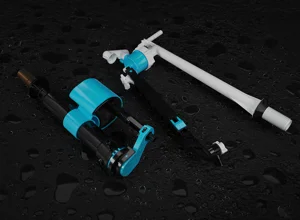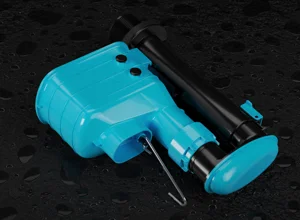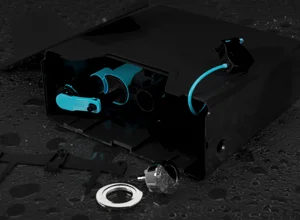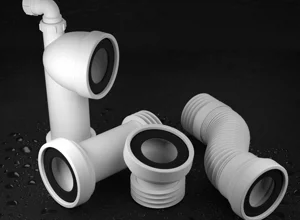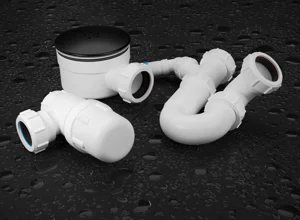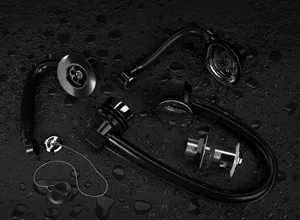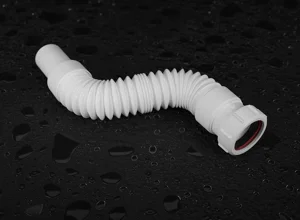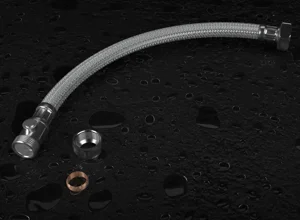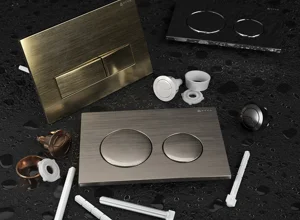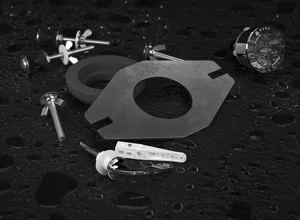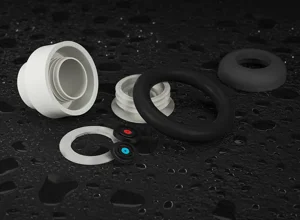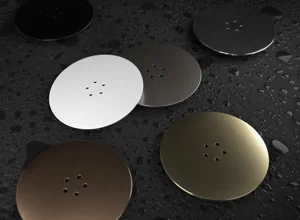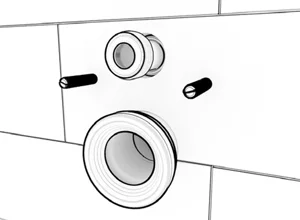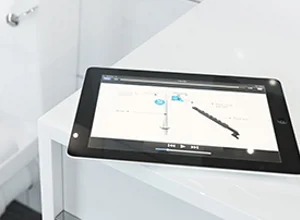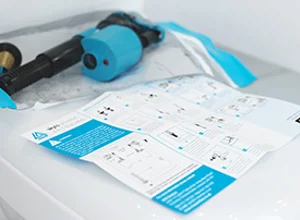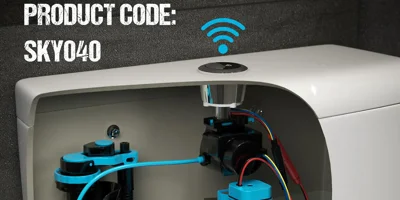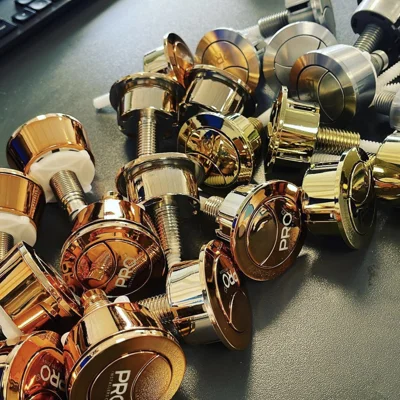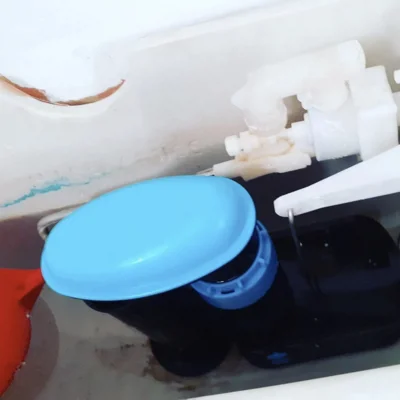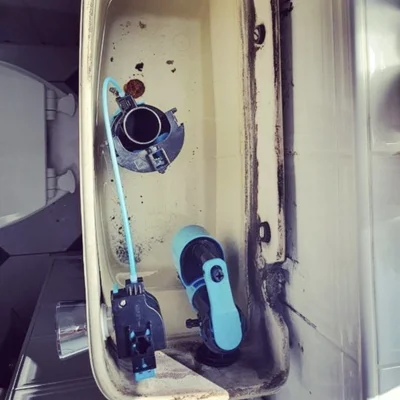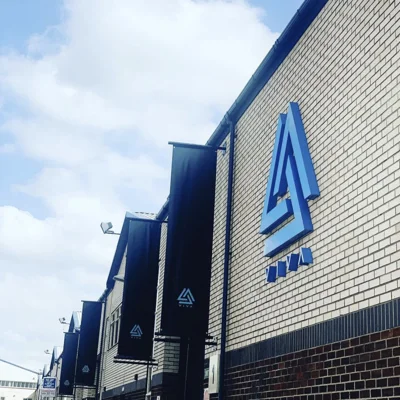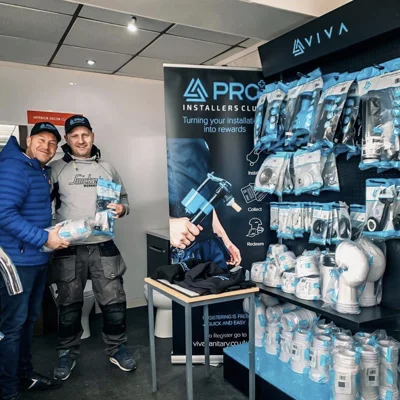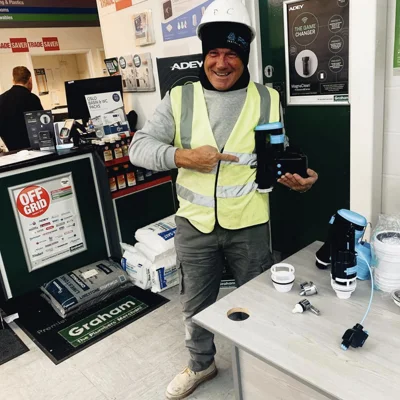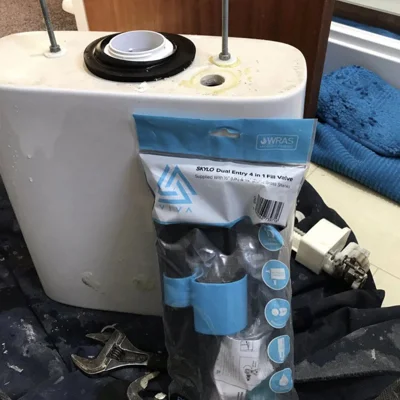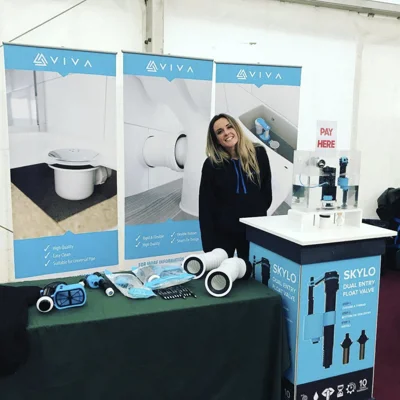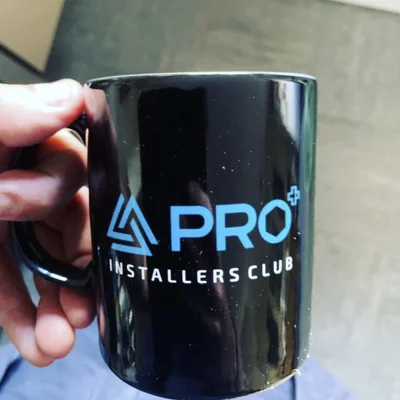While the development of the toilet has a complex (and sometimes messy!) history, most of us now use ultra-efficient, ecologically designed systems. But that sophistication doesn’t mean that they are complicated and convoluted. The internal body is actually very straight-forward and easy to understand. Read on to learn about how your toilet works. Knowing the basics will give you an advantage whenever you have a fault or need to repair a part, and that information is much less complicated than you might have imagined.
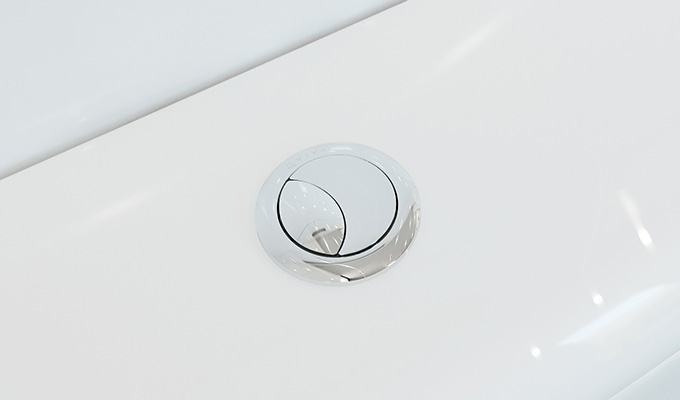
Image of a Dual Flush Push button with Half Flush on the left and Full Flush on the right
The only thing on the exterior of the toilet is the flush button.
These days, most flush buttons are split into two parts, the half flush and the full flush (you can use your imagination to determine the uses of each of these). For more information on the benefits of dual flush, check out our article What is Dual Flush. Once you press this button, all the water from the cistern rushes into the toilet bowl and is flushed away. But what happens inside?
Inside A Toilet
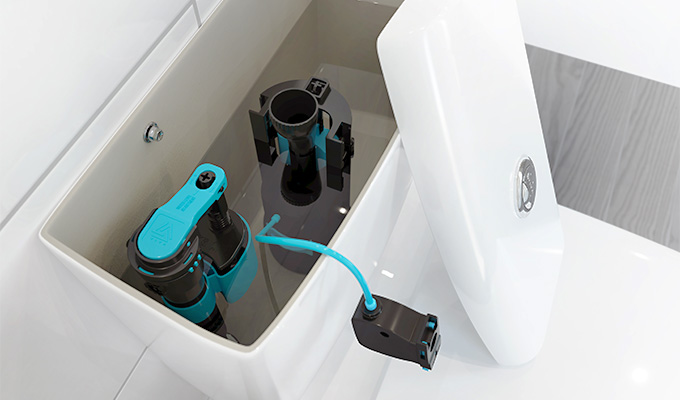
Image of the inside of a toilet with the fill valve on the left and the flush valve in the centre
The internal parts of the toilet have two main jobs: to fill the tank and to empty the tank. And if you look inside your cistern, you will see there are only two parts to perform these tasks, the fill valve and the flush valve. Let’s break it down and see exactly what happens and why.
Toilet Fill Valve
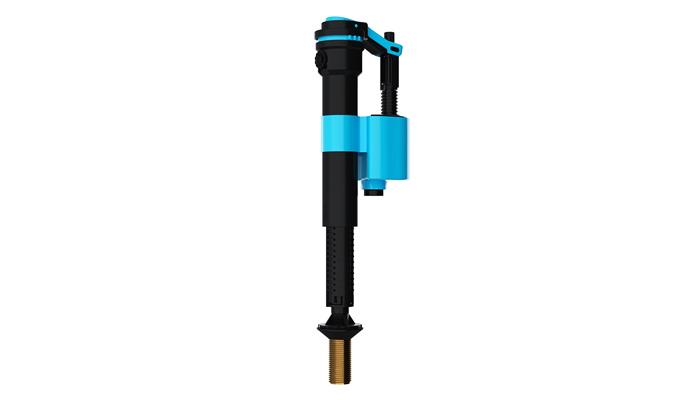
As you may have guessed, the job of the fill valve, or ballcock, is to fill the cistern with water. But how does the cistern know when enough water has come through?
That is the job of the float. The float can be found at the top of the fill valve. It works in the same way as a buoy; as the water rises, so does the float, just like a buoy floating on the surface of a lake. When the rising water lifts the float to its set point, the incoming water is stopped. It is possible to ad-just the level of the float, to make the water level higher or lower.
So in simple terms, after a toilet is flushed, the water feed comes through the fill valve, the float rises to its set level, the water stops rising and the cistern is filled and ready for the next flush.
Looking for a toilet fill valve?
That is how the cistern fills itself, but what happens when we push the flush button?
Toilet Flush Valve
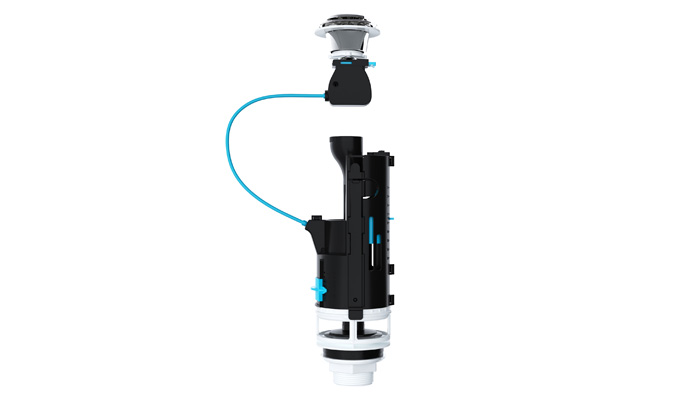
The flush valve’s job is to rush water from the cistern into the toilet bowl to wash away waste. We begin this operation by pushing the flush button, which is connected by a cable to the flush valve.
This works in much the same way as the brake on a bicycle. When you hold the brakes, the cable pulls the brake pads against the wheels. In the same way, when you flush the toilet, the cable pulls the flush valve and lifts it up.
There is a rubber seal at the bottom of the flush valve, and when the the valve is activated, this rubber seal lifts up and forces water out of the cistern and into the toilet bowl. Once all the water has been emptied, the flush valve drops back down, and the cistern is ready for the fill valve to replace all the water.
So simply put, you push the flush button, the connecting cable pulls up the flush valve, the water is forced out of the cistern and into the toilet bowl, and then the valve drops back down.
Looking for a toilet flush valve?
So what would happen if the toilet fill valve fails, would my bathroom flood?
Internal Overflow
While the flush valve and fill valve are the main components of a toilet, there is one more feature that has been designed in the event that the fill valve fails, and that is the internal overflow.
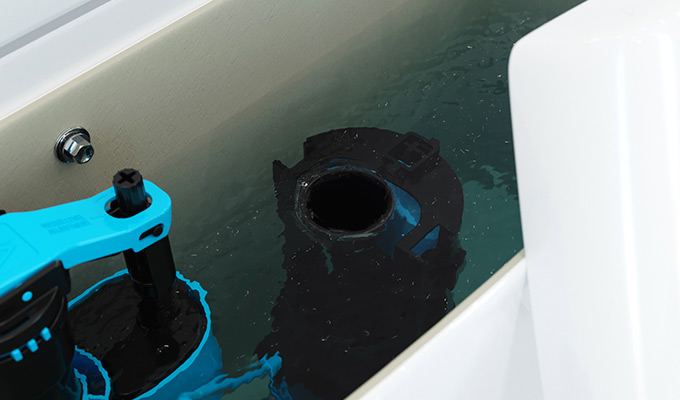
Image of internal overflow in operation
If the fill valve and float fail, the fill valve could pump too much water into the cistern and overflow into your bathroom. It used to be common to have a separate overflow standpipe that fed into the drainage in the event of an overflow, but we now have a much more simple and effective backup.
When the fill valve fails, and the water in the cistern fills unstoppably, the internal overflow allows the excess water to run straight down into the toilet bowl, which ensures you won't have a flood in your house. Most flush valves are now designed with an internal overflow, as they are recognised as one of the simplest and most effective backup methods.
So that is the basics of how a toilet works. Two simple valves and one emergency backup. For more information please check out our other articles, and if you found this article to be helpful then don’t forget to share!
